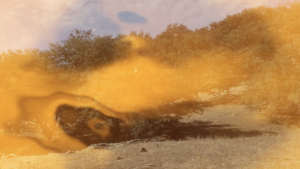by Adam Piron
Food and film are two universal languages that connect us. They can draw upon long forgotten memories, take us to a place we’ve never been, and say something we could never say ourselves. From dropping frybread into hot oil while listening to the Sunday afternoon movie playing on the TV in the living room to a big tub of buttery popcorn you nervously split on a first date at the movies; film and food have always found a way together.
As we move into November, the concepts of food and film are ever present. Award season films grace the silver screen, cranberry sauce that somehow retains the can lines, and evenings spent hunkered inside trying to decide what to watch and what to eat. With this in mind, our Sundance Indigenous Program staff have each curated a “dinner and a movie” experience.
Tune in over the next three weeks as they share a favorite film and the food that they would enjoy with it.
When we frame heritage, we tend to think of it as something like a trail we can look back to from where we’re currently standing. It’s a linear way of thinking that makes sense, but can also not account for Indigenous philosophies that hold the past, present, and future as concurrent happenings, all built and woven into each other in a living temporal tapestry. In celebrating Native Heritage Month, it’s important for us as Indigenous people to not only celebrate how far we’ve come, but also how we can continue to take the mantle that’s been in constant motion, in some ways still being held by those who came before us, while also seeing ourselves as ancestors in the making.
In highlighting work this month that has been a part of the Indigenous Program’s heritage, either from our artists or Festival alumni, my team and I have selected a few films that we feel embody this notion of not only celebrating and living the blurred lines of how we can honor ideas of Native American legacies, but also pairing them with a spirit of generosity and reciprocity by highlighting some of our favorite staples of Indigenous cuisine.
Thinking back on some of the films and artists who regularly move between these concepts of time, legacies, and celebration, one artist that has embodied this spirit is the work of Fox Maxy (Mesa Grande Band of Mission Indians and Payómkawish). Her feature film debut Gush premiered at the 2023 Sundance Film Festival, and the way that it effortlessly leaps from the personal, to the conversational, over to the historical, and back to the observational is something that is boldly and sublimely Indigenous.
Built from over a decade’s worth of personal archival material, Maxy’s chimeric film effortlessly slips between footage dealing with deeply personal pain, jubilant instances of community celebration and healing, and moments of documenting her world’s absurdity, darkness, and beauty. Unlike the fool’s errand of attempting to deliver a singular interpretation of what Indigeneity is, Gush defies anything resembling an easy definition. Like Maxy’s filmic style, it cannot be put into a box and refuses to allow any instance in which it might. Within the canon of Indigenous cinema, it’s a work without precedent and one that is made for the past, present, and future. While Gush is not currently able to be seen, much of its DNA and bones can be seen in her latest work, Guts and Glitz on Mubi.
While thinking of something to pair with this in terms of Native American dishes, one of the things that immediately popped into mind was frybread. One its surface, frybread might not make thematic sense, but a knowledge of its origins are not totally dissimilar to the ethos of Maxy’s film. Largely a creation of Native Americans being forcibly removed from their lands and onto reservations, tribes were provided small sets of staple food items from the US government to make due, two of which included flour and lard. These provided the basis of how each of these tribal communities created their own versions of frybread, not only as a means of survival, but also by making something out of limited means. Every tribe, and even each family, has their own interpretation of the dish. It’s something that’s come to be a symbol of Indigenous resilience, gathering, and comfort. It’s a reminder of the past now in the present and something that will surely be carried into an Indigenous future.

Frybread Recipe
INGREDIENTS
1 package dry yeast
3 cups warm water
1 tablespoon salt
1 tablespoon sugar
6 cups flour
2 tablespoon oil
1/2 cup cornmeal
DIRECTIONS
Dissolve yeast in warm water then add salt and sugar. Let stand for 5 minutes covered with a towel. Add flour and oil to the liquid mixture. Mix and put on a floured bread board and knead until mixture is smooth. Put dough in a greased bowl, cover with a towel and let it rise for 1 1/2 hours. Remove from the bowl and put on a breadboard, knead in the 1/2 cornmeal. Make dough into 2 balls rolling each into 12-inch circles 1/2 inch thick. Cut into 2 inch squares and drop into hot cooking oil. (Works best with a cast iron skillet.) Fry 5 to 6 pieces at a time for only a few moments. Drain on paper towels.










